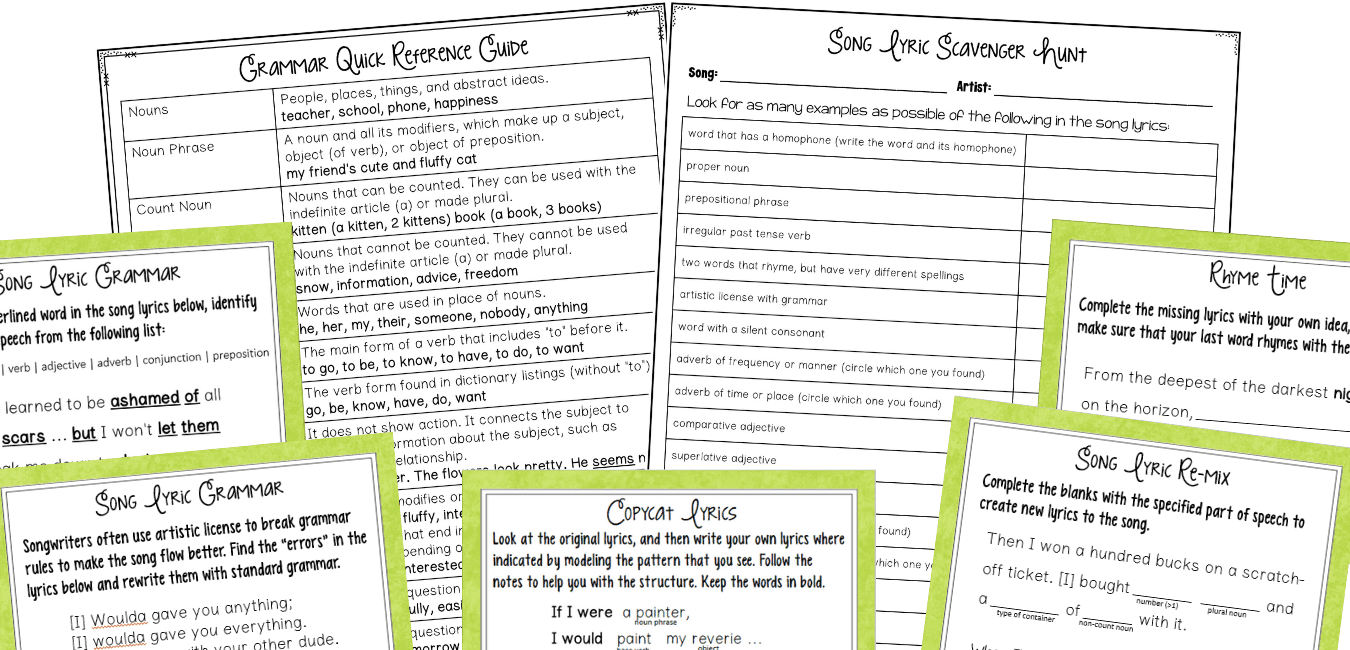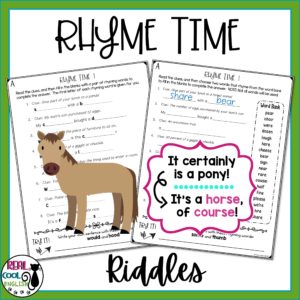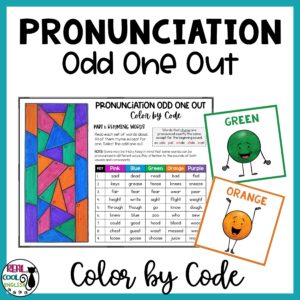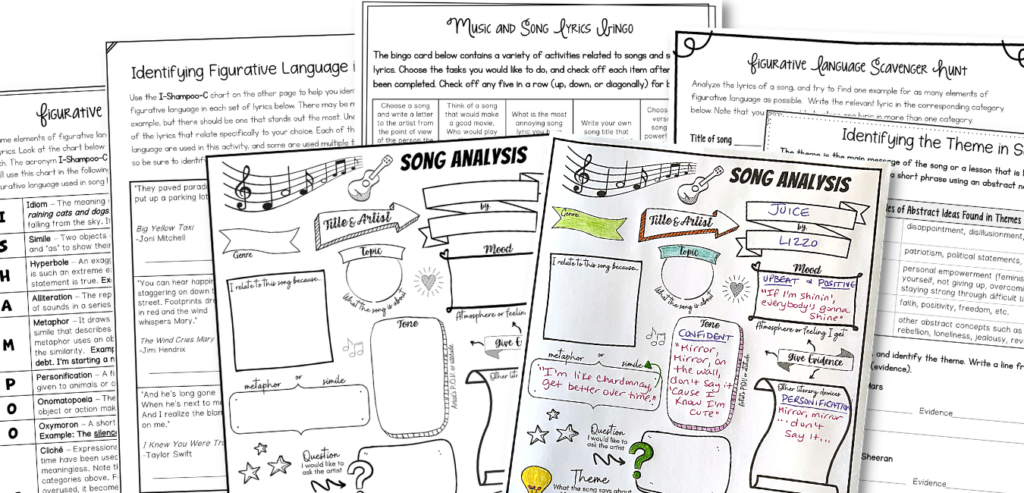17 Creative Ways to Teach English With Songs
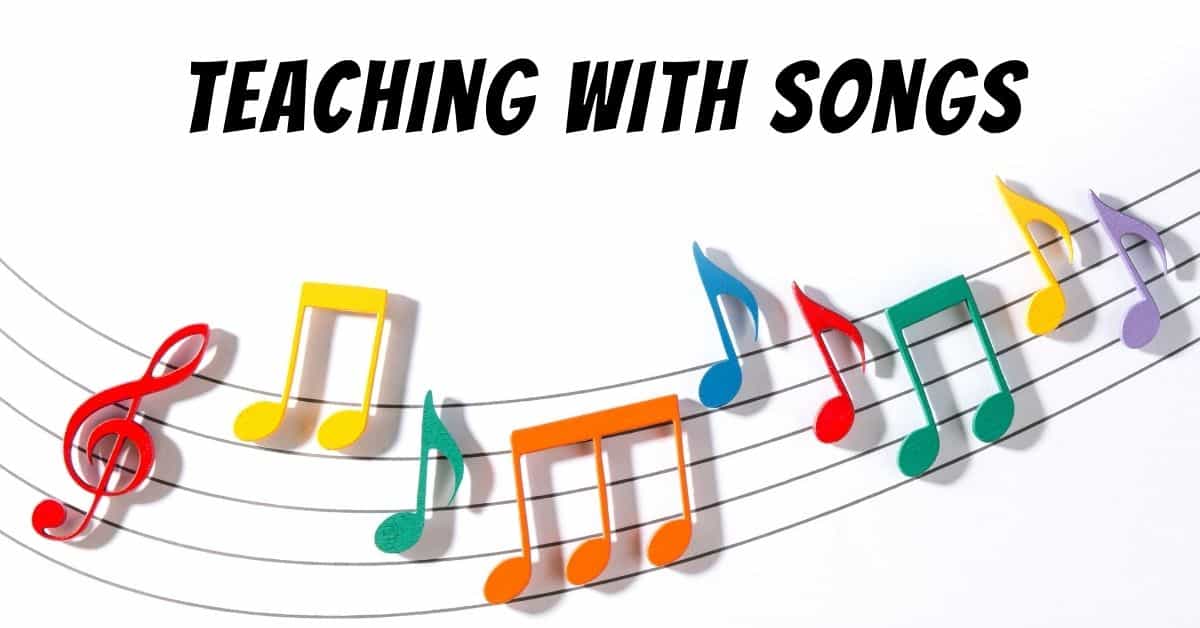
I love music, and I have found that it is also one of the best ways to engage students. It adds an element of fun to the learning process, which helps make concepts stick. Doing activities with music and teaching English with songs can help liven up a class or give students a fun break from those necessary tasks that may not be so exciting.
It may seem hard to decide how to use music in the classroom because it’s such a broad topic, and we think that there is too much preparation involved to make a complete lesson from it. While you certainly can make a long, detailed lesson using a song or songs, it is not necessary to do it this way. In fact, you can use songs to create short, focused lessons that you can do regularly throughout the year.
Song lyrics are rich sources of examples of grammar and vocabulary, and they are often a perfect springboard for discussions. It can be a bit time-consuming to try to find all the examples you want, so I recommend keeping a running playlist of songs every time you hear one that you think would be interesting to use for a lesson. On your list of songs, include notes about the grammar or language point that could be covered using that particular song. That way, when you’re looking for something specific, you can quickly go through the song list and find the one that best fits your needs.
For my examples here, I picked a few specific songs that I like. In particular, I used the song “I Don’t Want to Be Alone Anymore” by Billy Joel because it is a great example of how you can use one song to discuss multiple grammar or other topics.
I have also created a Google Slides document linking to the songs and lyrics that I used here. You can also use this document to make your own running list of grammar or other points that you want to cover and link to the YouTube videos and song lyrics. That way, you can have everything right where you need it.
Before getting into the list of ways to use the songs, I just want to give a quick reminder to carefully check lyrics and subject matter so that they are appropriate for your students. If you really love a song and you want to use it, but it’s not appropriate, check to see if there is a clean version that you can use. For example, I have linked to a clean version of Juice by Lizzo. However, if you search for lyrics, you will only find the original lyrics, so you will want to clean those up before distributing them to your students.
Now, for some examples of how I teach with songs in my classroom!
Grammar & Mechanics Activities
1. Parts of speech
This is one of those perfect quick activities you can do to focus on a grammar point, while also giving students a fun break. This could work with just about any song, so you can choose something that you think students would like to hear. And it’s super low prep too! Print out the lyrics and distribute them to the class. Ask students to locate a certain number of nouns, verbs, adjectives, adverbs, etc. If it’s more than one part of speech they are looking for, have them use different color pens or circle one, make a box around another, etc. Meanwhile, you can play the song for the class.
Make this a more advanced activity by asking them to look for examples of adverbs of time, a participial adjective, a gerund, etc.
It’s not even necessary to print out the entire song, you could just have a verse or two that you want them to focus on.
2. Verb tenses
Similar to the above activity, have students locate and identify different verb tenses used in the song. It’s also a good activity to use to discuss why certain tenses were used, or why the artist decided to switch between tenses. You could also have them search for examples of imperative, passive voice, reported speech, contractions – particularly with contractions such as “How’d” to discuss which word is being contracted (did or would). They could also write out the full forms of all contractions. Another option is to have them look for helping vs. linking verbs or identify modal verbs. Really, this could be adapted for just about any verb focus you are working on.
3. Correct the grammar
This can be a great bell ringer or filler activity when you have just a couple of minutes. Find a verse that has non-standard grammar, but is acceptable because it’s a song, but would not be appropriate for other situations and “correct” it. It’s also a great way to emphasize what is appropriate for informal speech vs. academic writing or more formal speech, and for language learners to notice and understand reduced forms such as “gonna” and “ain’t”.
4. Spelling and punctuation, quotes, etc.
There are so many activities you can create to practice mechanics! Again, these can be quite short; you can even use them as bell ringer activities.
Spelling: One activity I love to do is practice spelling by deleting key words and having students fill in the blanks. Strategically choose words that are commonly misspelled, especially homophones, including examples of your/you’re, or there/they’re/their, etc. They will have to use the context to choose the correct word. This reinforces the correct spelling of words that they hear and use every day.
After the activity is completed, like with all other dictation-type activities I do in my classroom, I have students compare their answers before going over them as a group. This is a great way for them to learn from each other or discuss any differences to decide which answer is correct.
Here is an example from the above-mentioned Billy Joel song:
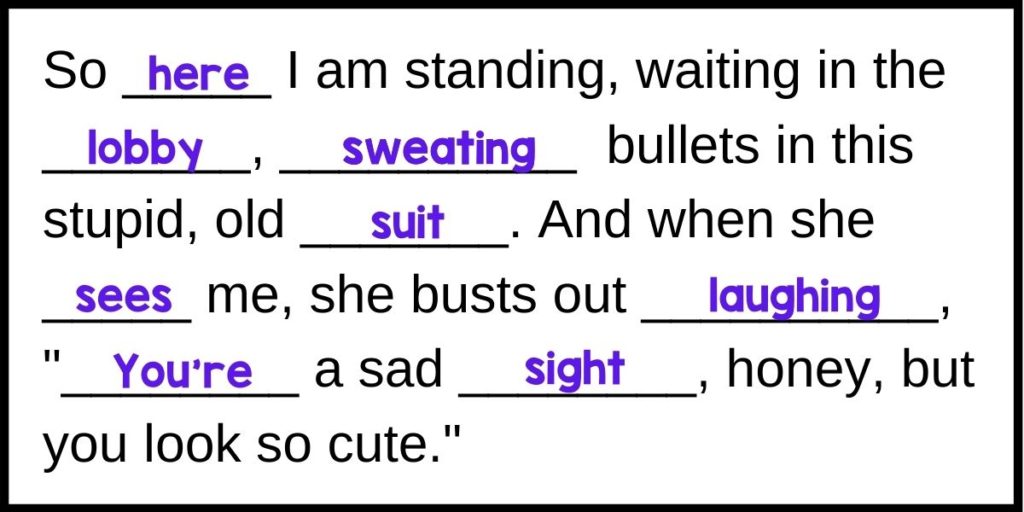
Punctuation and capitalization: Song lyrics are typically listed in poem format without most traditional punctuation marks. The first word of each line is usually capitalized, whether or not it is the beginning of a sentence. This is a great opportunity to choose a section and ask students to review the sentence and add punctuation as if it were standard written material. Then they add periods and commas where appropriate and correct capitalization.
I have also used this activity to identify quoted speech and to practice applying correct punctuation and capitalization with quotes.
Note that it might be easiest to remove all capitalization so they can just add editing notes to indicate where capitalization is needed. Also, you might want to remove superfluous language, such as conjunctions or filler words at the beginning of a verse that might distract them from being able to identify the complete sentences easily. For example, If I were to do this activity using the above Billy Joel lyrics, I would probably remove the conjunctions “so” & “and” at the beginning of the first two lines.
5. Mentor sentences/structure analysis
If your students need practice with writing longer, more complex sentences, songs are perfect for this as well! Take a verse from a song and then make a copy and delete the details, leaving only the basic framework and notes for how to fill in the rest with their own idea. Students will then try to model the line from the song, but with their own words.
For the deleted sections, you can add as much detail as necessary and described in a way that your students understand how their sentence needs to be structured.
Here is an example from “You Sent Me Flying” by Amy Winehouse. First is her original line, then a few examples of how you could present it for the students to model.
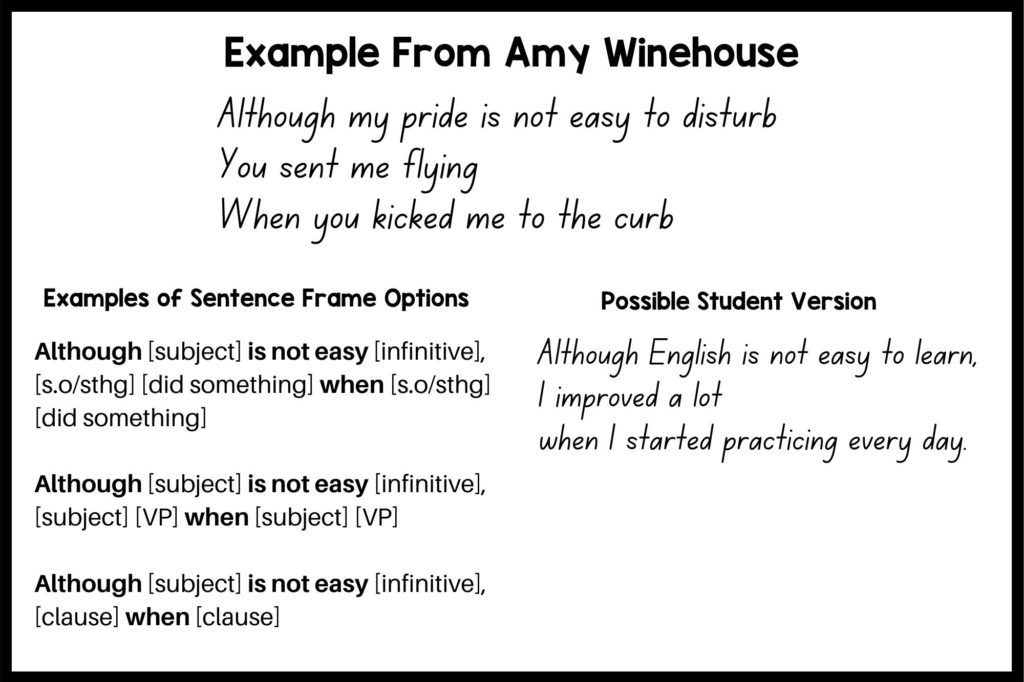
Critical Thinking Activities
6. Predictive vocabulary
This is a great activity that will really get students thinking! Take lyrics from a song or verse and blank out specific words. Students will make their guess as to what goes in the blank by using context, inferring meaning based on the word it rhymes with, a synonym or definition that you provide, or some combination thereof.
This would also work great for phrasal verbs, collocations, set expressions, etc., particularly for English language learners.
In the following example, you could put a synonym for cruel next to the blank (e.g. mean) or just have them use the context and the rhyme from school to try to guess the word. For English learners, this has the added benefit of allowing them to notice the pronunciation of words that, based on spelling, don’t seem to be rhyming words.
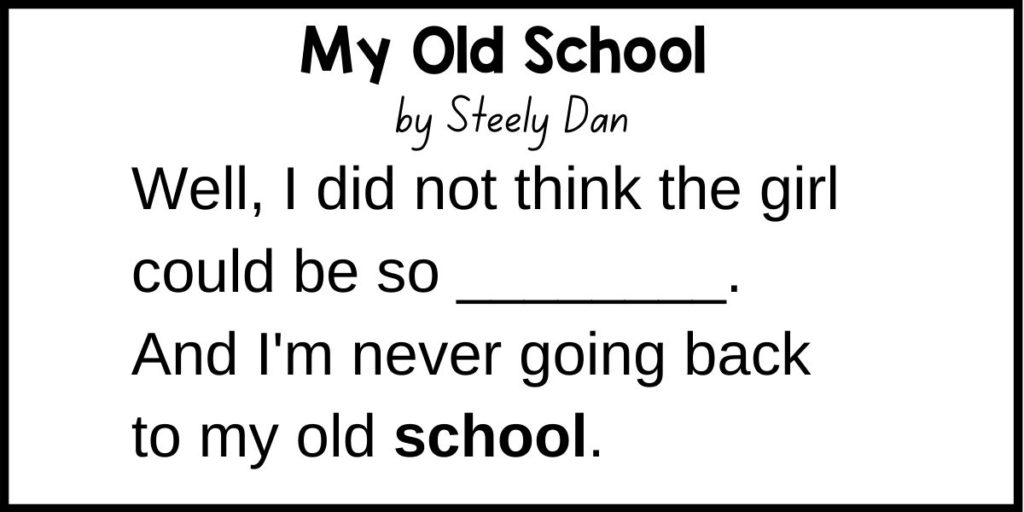
You can also take this opportunity to discuss the part of speech that is needed here and how we can tell.
Note that you will want to use songs that students are not likely to be familiar with because you don’t want them to know the lyrics beforehand.
For ready-to-go grammar activities for teaching English with songs, you may be interested in Song Lyrics for Grammar:
And for more rhyming activities, try Rhyme Time or Pronunciation Odd One Out. Click the images below to find out more!
7. Analyze a song for meaning, mood, tone, discuss interpretation, etc.
While we often analyze poetry for meaning and literary elements, songs are perfect for this as well and are usually much more engaging for the students. This is especially true with songs that students are already listening to and enjoy. They often find it interesting to think more deeply about a song that they love and find that they can connect with it even more. Some lyrics can be quite poetic, and it’s not always obvious what the meaning is behind them, so this can be a great topic for discussion as well!
Students can also analyze the theme, mood, and tone of the song. For example, what is the artist’s message? (theme) How is the artist feeling? (tone) How do we feel when we hear the song? (mood) And then give support for their ideas using the lyrics.
For example, in the lyrics to Juice by Lizzo, we can see the following lines:

Students might use the lyrics to say that she feels confident, or that we get positivity from her lyrics, etc.
8. Write a journal entry
Another way to explore the idea of theme or tone is to have students write a journal entry from the perspective of the person who is singing that song. Students imagine how that person was feeling, and what they might write in a journal that day. Keep reading for a FREE template you can use for this! Alternatively, students might write a letter to the singer from the perspective of the person who the song is about.
9. Use music videos
Another great option for using songs for discussion or deeper thinking is to compare the song lyrics with the music video. Students discuss how the video does or doesn’t help tell the story. Does it match the mood of the song itself? What images do they see? What symbolism is used in the video? What would they do differently if they were creating the video?
For English language learners, it’s a great opportunity to practice speaking or writing by describing the scenes and/or story that is unfolding. They could work in groups and divide the video into sections to analyze and describe what is happening. They will likely find words that they don’t know, so they will build their vocabulary by looking up the words that they need to describe the scene.
For example, in the video for Hello by Adele, they might describe a view through a window where a car is approaching on a long road, Adele is talking on the phone outside with the wind blowing in her hair, then she walks in the house and the door creaks as she opens it, she takes sheets off the window and furniture and shakes the dust off, a clock is ticking, she puts a kettle on the stove, etc.
This can be especially useful because English language learners often have difficulty with subject-verb agreement in the present tense. Since videos and other artistic scenes are described using the present tense, this activity is perfect for practice.
Activities For Deeper Analysis
10. Figurative language
If you’re teaching figurative language, songs are a perfect way to engage students and help them understand these concepts in a way that may be more accessible than literature. Use songs to provide examples of metaphors, similes, hyperbole, etc. It can be a bit time consuming to try to find examples for all the elements, but I have put together a packet that has everything you need, including lots of examples and practice for figurative language. It also includes opportunities for students to explore their creative side.
11. Write a paraphrase of a song lyric
A great way for students to show their understanding of more abstract ideas is to have them rewrite a line from a song to express the meaning in ordinary language.
Paraphrasing can be quite difficult for students, so it is important to give lots of practice whenever there is a chance. When students try to paraphrase, they often try to reword every part of the original sentence or paragraph, but this kind of activity shows them that the details are not always necessary, but that it’s important to express the meaning. It is also essential to completely understand the passage before trying to paraphrase or summarize it, so this forces them to examine the lyrics and get to the heart of the meaning, without relying on the details in the sentence.
Let’s take for example the same line discussed above from You Sent Me Flying by Amy Winehouse:
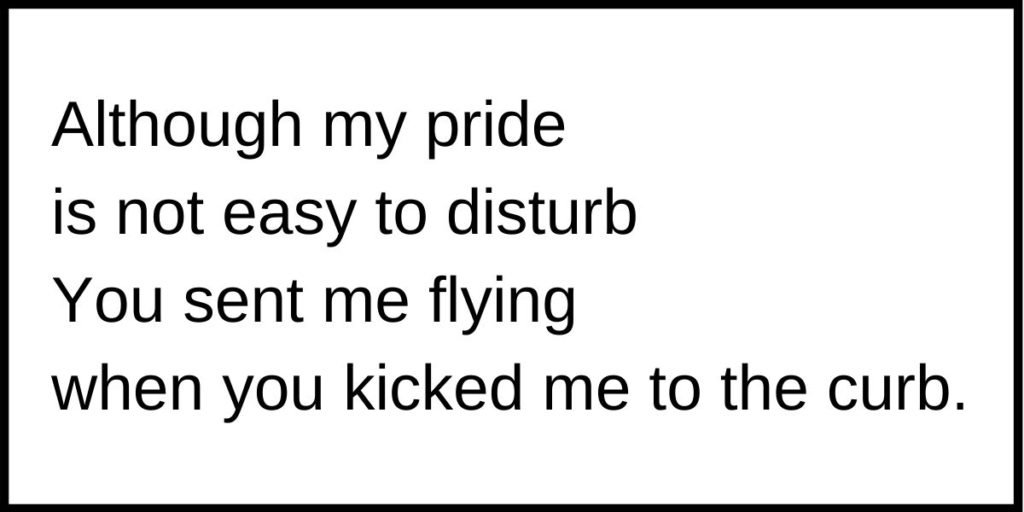
Have students write one sentence to express the overall meaning that she wants to express through that line. Students might come up with a sentence such as: “I’m a strong person who doesn’t get upset easily, but I was devastated when you broke up with me.”
12. Add another verse
For a fun way to express their creativity, students can add their own verse to some part of the song. For an extra challenge, they can try to match the rhyming pattern and/or rhythm of the song. Or they can take a verse from the song, and make minor or major changes to it by changing a few words or a line.
Activities For Advanced English Learners
13. Noticing rhymes and near rhymes
As discussed above, rhymes are a great way to show how words that look completely different can actually rhyme. Also, English learners often have difficulty distinguishing similar sounds. Songs are perfect for highlighting these sounds. In the example below from Juice by Lizzo, students could look at the words in bold and decide which words rhyme (the first 3), and which one does not (news). It’s also a perfect opportunity to discuss the pronunciation of the word choose, and how it rhymes with news, and not loose, and to discuss commonly confused words lose and loose!
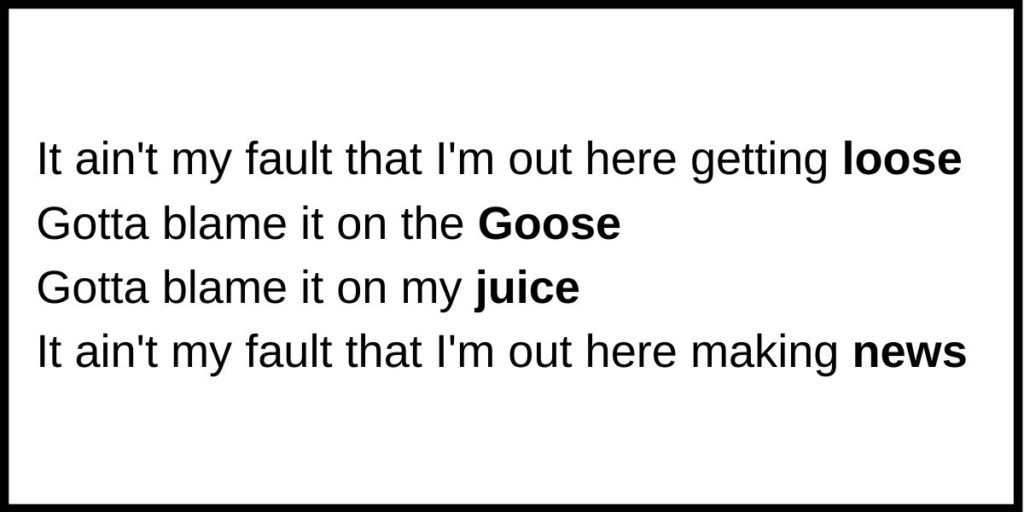
You can find activities using rhymes and minimal pairs HERE and HERE.
14. Idioms, phrasal verbs, collocations, and expressions.
Songs are a gold mine for idioms and phrases, and even pop culture references, so they make highly interesting topics for English learners. Students can try to guess the meaning from context clues (perfect to have students discuss in pairs or small groups) and then go over the meaning together.
Going back to the Amy Winehouse example above, do your students know the expression “to kick someone to the curb”? Maybe not, but they may be able to understand the general idea from context. This is a phrase that is commonly used in informal situations, and students love learning about these types of expressions!
There are so many examples of songs with phrasal verbs and vocabulary that are probably new to most English learners, but if you’re looking for a place to start, check out: Nobody to Blame by Chris Stapleton and Buy Me a Boat by Chris Janson.
I find that the best songs to work with for this purpose are those that tell a story. This is why Billy Joel songs and country songs are often great places to find examples.
15. Pronunciation, word linking, reductions, etc.
In addition to using rhyming words to notice pronunciation, you can also read the lyrics from one or two verses to practice pronunciation. Then have them sing the lines along with the music. They will find that connecting the words and maintaining the flow of the lines becomes easier when they sing it.
I remember once when I was teaching phrasal verbs, one that came up in the lesson was “cut down on” and students needed to respond with phrases like “I need to cut down on it.” They were having trouble linking the words together for more natural flow, so I started singing “cut down on it” to the tune of Kool & the Gang’s “Get Down on It.” Then they started singing it also, and the phrase flowed much more naturally. As an added bonus, it livened up a class that needed a break from that activity.
Song lyrics also have many examples of reductions that we use in everyday speech (wanna, goin’, didja, etc.) so it’s useful to discuss the forms as they come up in the song lyrics you are working with.
16. Double gap fill
I love this activity because it serves two purposes: first, it gives students practice using context to predict words, and then it’s a listening activity to check their answers.
For this activity, take lyrics from a song or several verses from a song and delete key words throughout. Be sure to choose words that students could reasonably make guesses for the sentence to make sense. You could also delete short phrases, indicating the number of words by the number of blank lines.
This part of the activity could also work well in pairs, with students discussing the best/most logical words to fit the sentence.
Then they listen to the song and see if they were correct, and if not, write in the word or words they hear. Then discuss as a group.
This would also work well if you wanted to target certain areas where students frequently make mistakes, such as subject-verb or number agreement, inappropriate tense shift, wrong preposition, etc. For more activities for your advanced level ESL students, see How to use TED Talks With ESL Students!
Fun Language Review Activity
17. Song Lyric Scavenger Hunt
This is another activity that would work well in pairs. Create a list of various examples related to grammar, language, figurative elements, etc. that you would like students to find in the lyrics of a song. Then have students analyze the lyrics to find as many examples from the list as they can.
Click HERE to get a FREE editable scavenger hunt template that I have created based on the song “I Don’t Want to Be Alone Anymore” by Billy Joel. I have chosen this song because it has examples of just about everything. I also included an answer key so you can see how I analyzed the song. Because it’s editable, you are free to delete any of the categories that you don’t want to include, and you can add any others that work better for your class and/or the song that you choose.
Have fun using music and teaching English with songs in your classroom!
I hope you have found some useful tips to help incorporate music into your lessons. These are only some ideas for teaching English with songs. If you have found other ways to use song lyrics in your classroom, I would love to hear about it! Want more free activities to use with your ELA or ESL students? Subscribe to my blog to get 4 fun freebies and stay up to date on the best sales, free resources, and useful tips!
Here are links to all the materials and resources mentioned in this post:
- Google Slides document with links to YouTube videos and lyrics
- Song Lyric Analysis for Grammar and Sentence Structure
- Rhyming Riddles and Pronunciation Activities
- ESL Pronunciation and Rhyme Odd One Out
- Journal Activity and Song Lyric Scavenger Hunt
- Song Lyric Analysis for Figurative Language and Creative Writing Activity
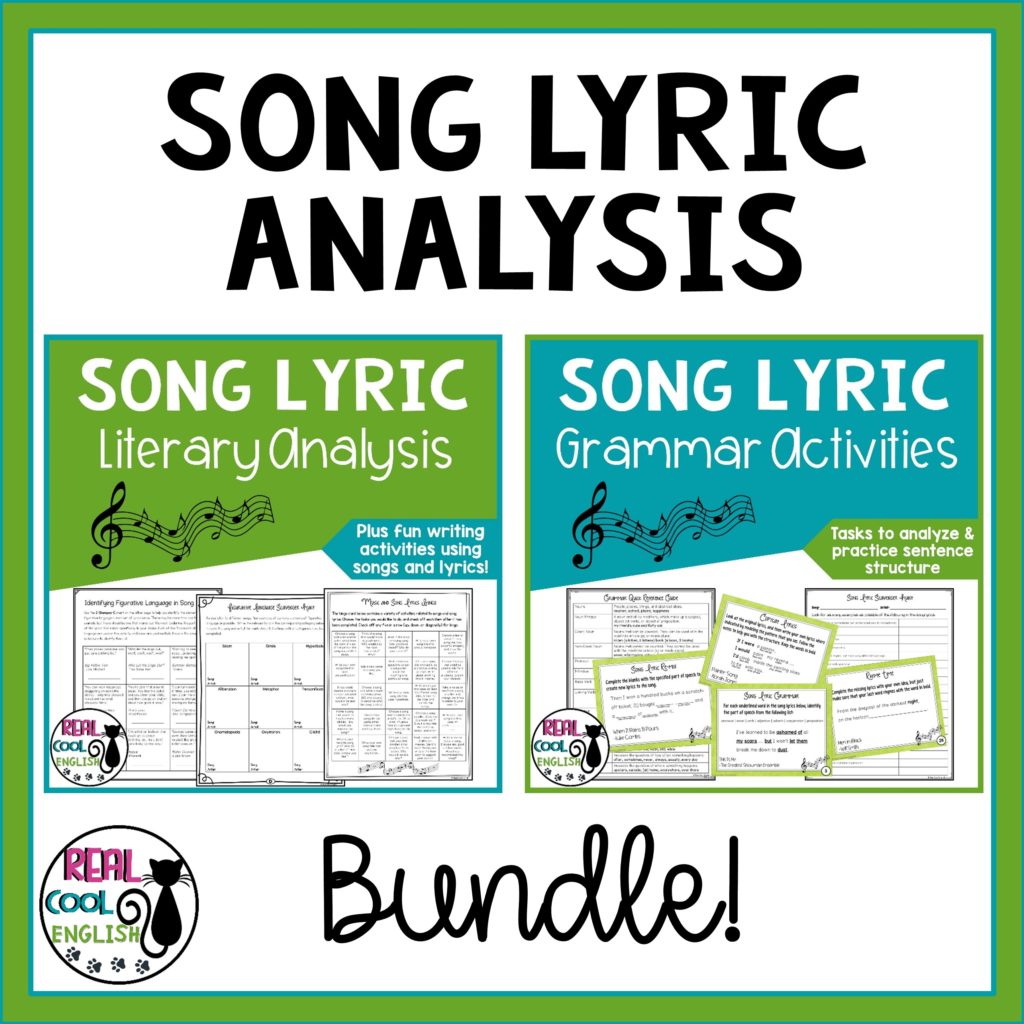 | 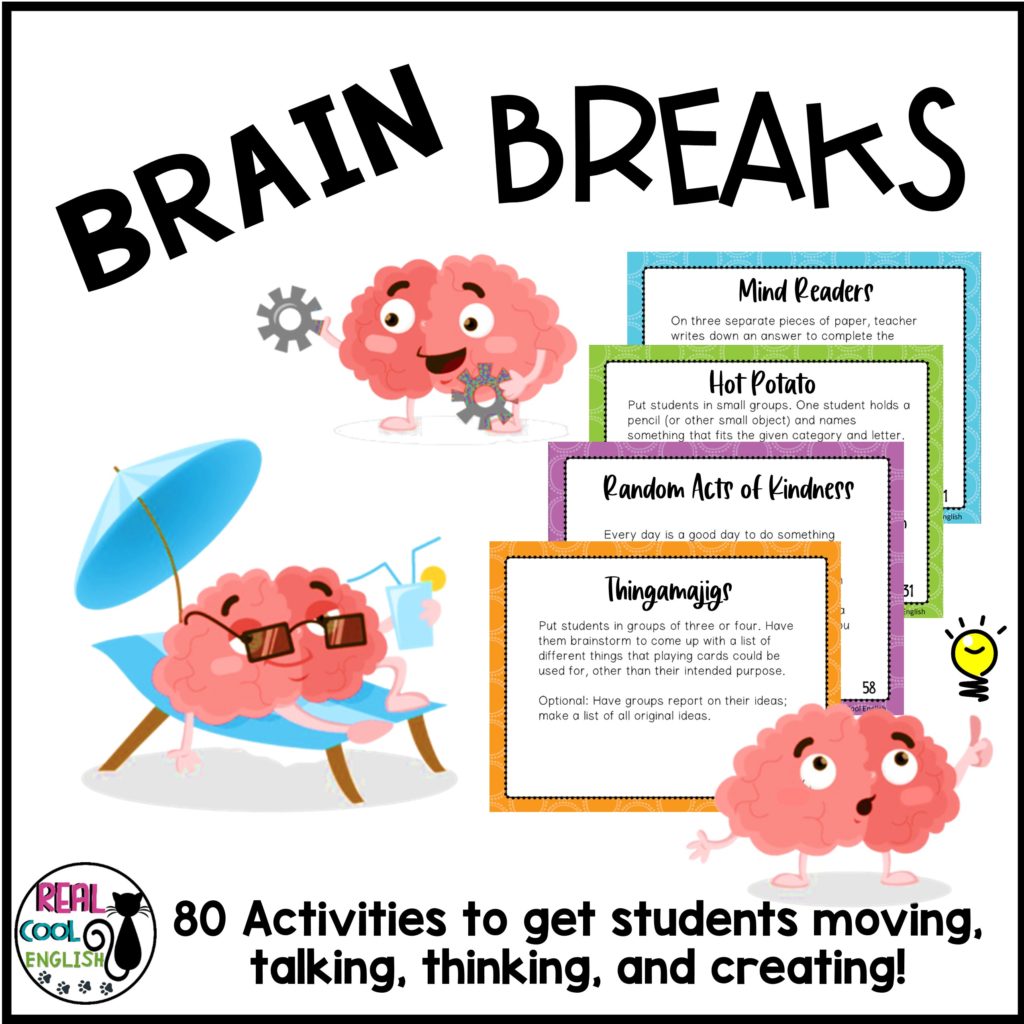 | 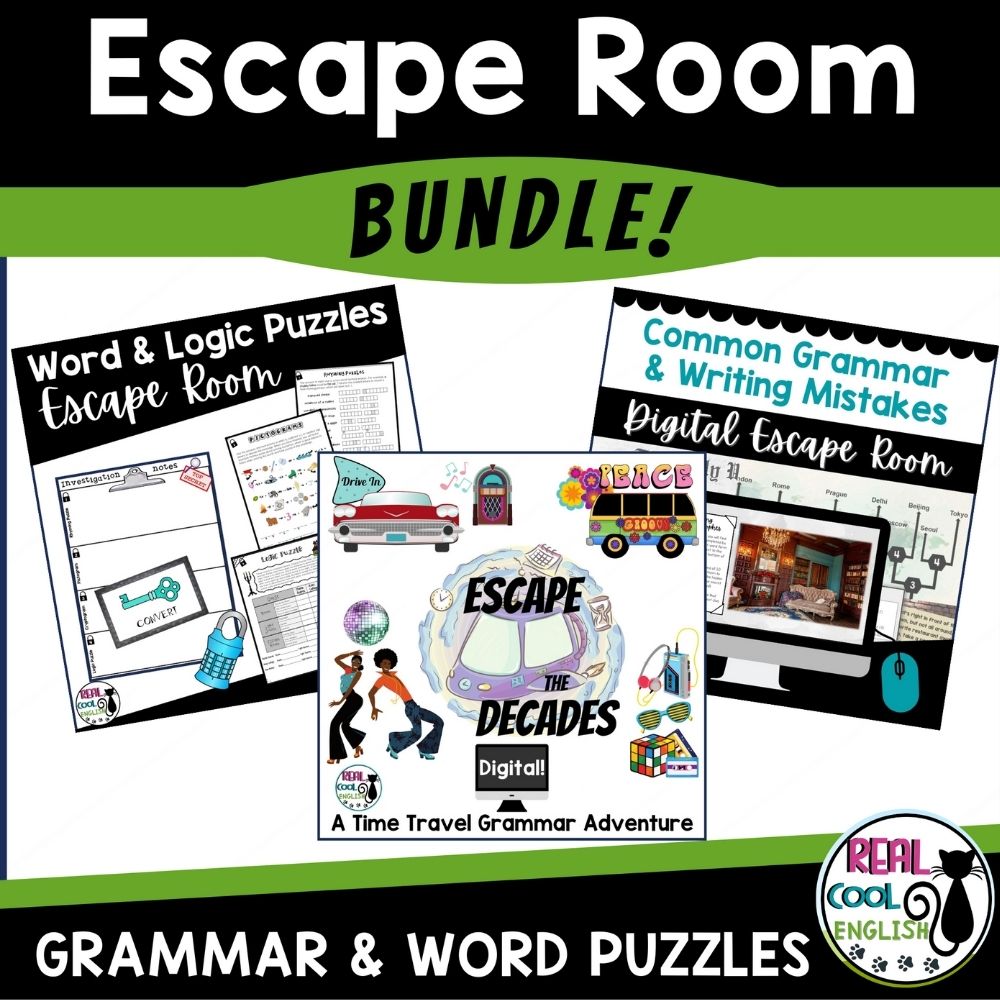 |
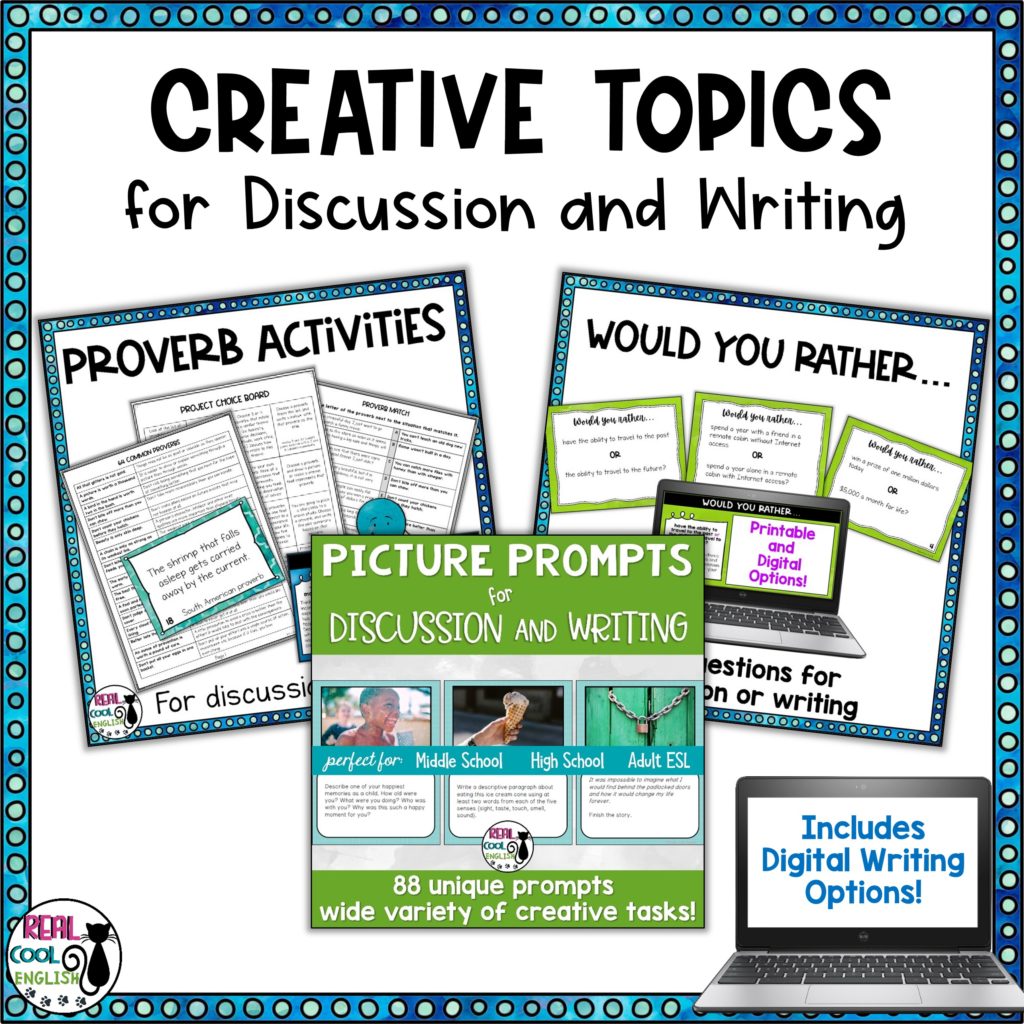 | 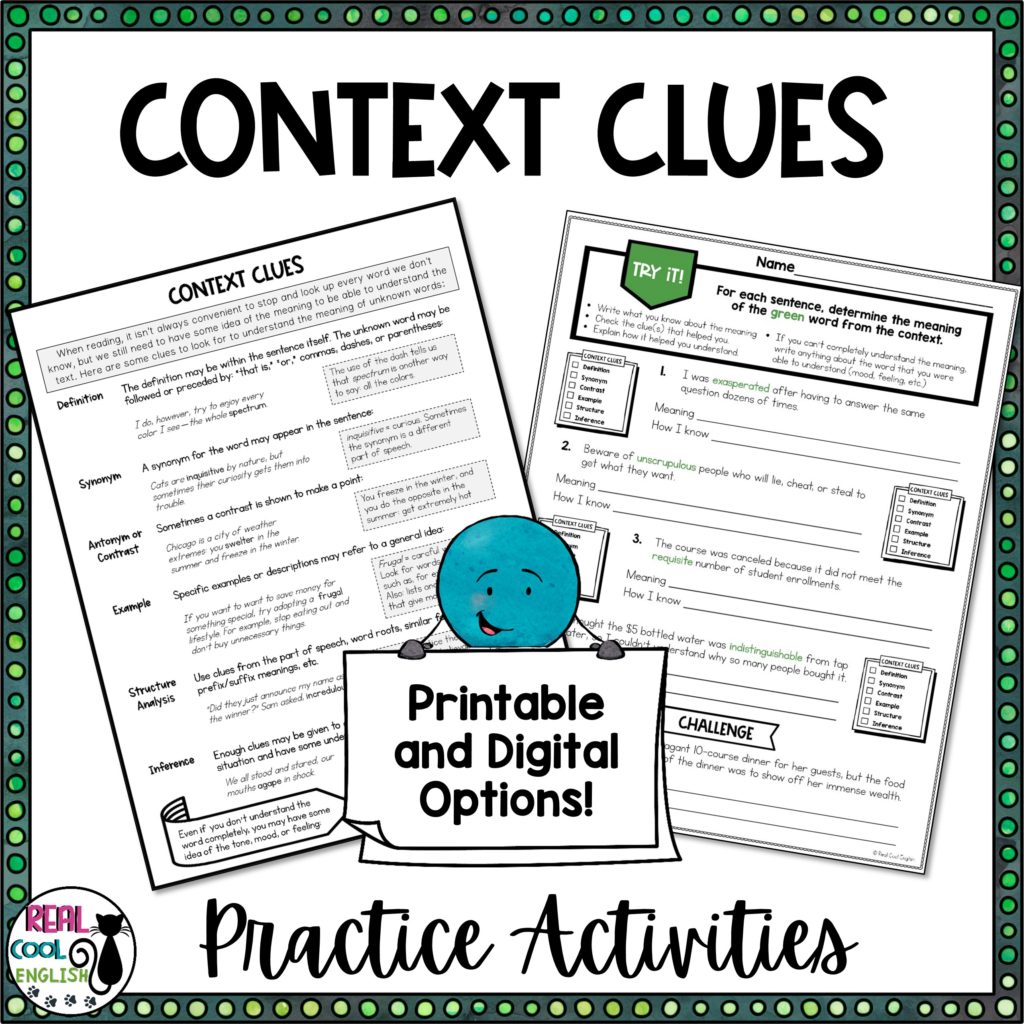 |  |

